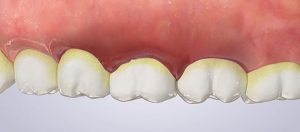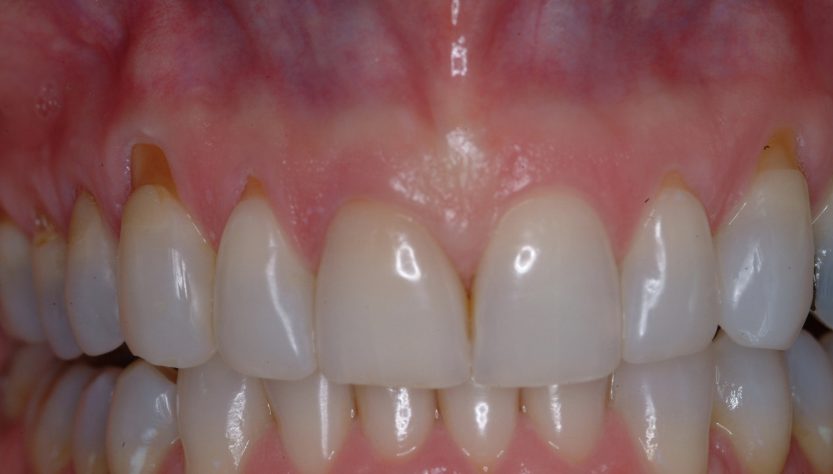The term periodontal means around the tooth. Periodontal disease (also known as periodontitis or gum disease) is a common bacterial infection of the gum tissue affecting the supporting and surrounding soft tissues of the tooth and jawbone. If the common inflammatory condition is left untreated, it can lead to shifting teeth, loose teeth and eventually tooth loss.

A periodontal probe (small dental instrument) is gently used to measure the sulcus (pocket or space) between the tooth and the gums. Pocket depths, amount of bleeding, inflammation and tooth mobility help make a diagnosis:
- Gingivitis – Plaque and its toxins irritate the gums making them tender, inflamed, and likely to bleed.
- Periodontitis – As plaque (tartar) continues to build up and harden, the gums begin to recede. Deeper pockets form between the gums and teeth and become filled with bacteria and pus. The gums become very irritated, inflamed and bleed easily. Slight to moderate bone loss may be present.
- Advanced Periodontitis – The teeth lose more support as the gums, bone and periodontal ligament continue to be destroyed. Unless treated, the affected teeth will become very loose and may be lost. Moderate to severe bone loss may be present.
If you have any questions or are unsure if you have gum disease, please contact Dr. Borth to schedule an appointment.

